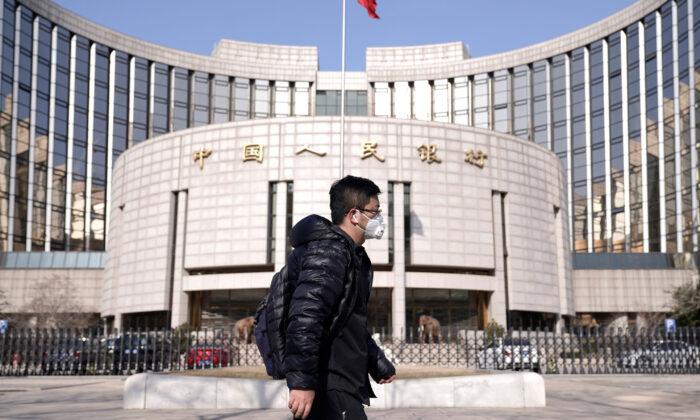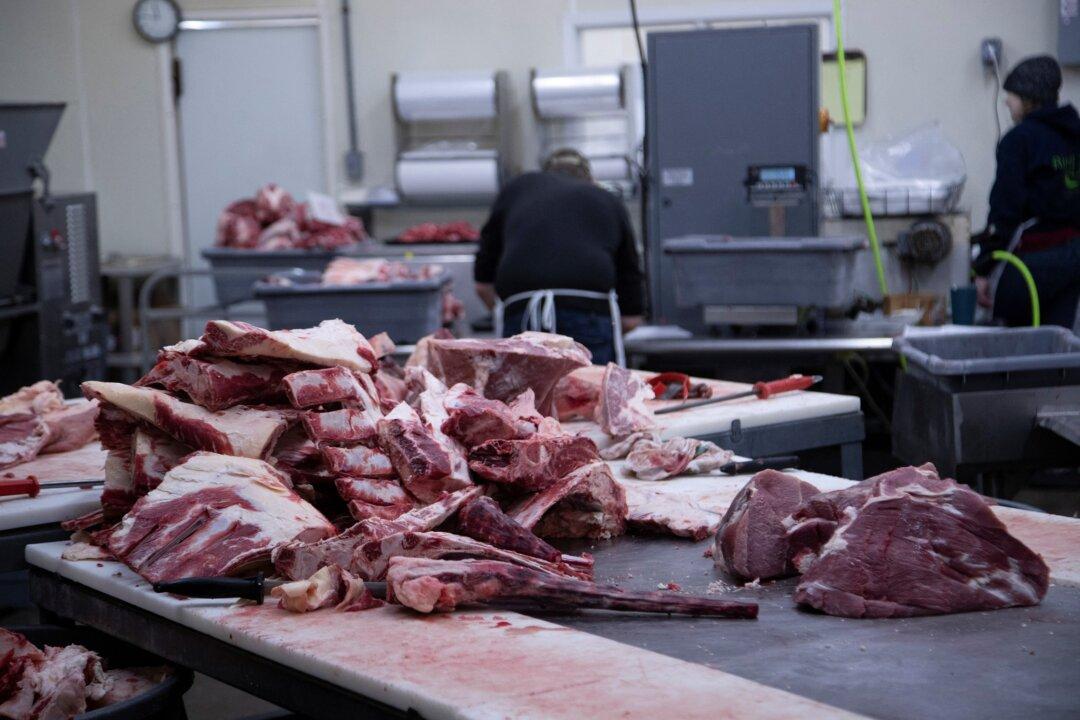SHANGHAI—China’s central bank unexpectedly cut the rate on reverse repurchase agreements by 20 basis points on March 30, the largest in nearly five years, as authorities ramped up steps to relieve pressure on an economy ravaged by the coronavirus pandemic.
The People’s Bank of China (PBOC) announced on its website that it was lowering the 7-day reverse repo rate to 2.20 percent from 2.40 percent, but it didn’t give a reason for the move. It was the third cut in the 7-day rate since November 2019.
In a note to clients, Capital Economics said, “A lot more easing will be needed, especially on the fiscal front, to help the economy return to its pre-virus trend.”
Global policymakers have rolled out unprecedented stimulus measures in the past few weeks, cutting rates sharply and injecting trillions of dollars to backstop their economies as many countries have been put under tight lockdowns to contain the pandemic.
Yan Se, chief economist at Founder Securities in Beijing, said the rate cut was China’s commitment to a pledge it made during the Group of 20 major economies meeting last week to combat the coronavirus and stabilize financial markets.
“China was the only major economy that had not yet implemented large-scale easing measures,” Yan said, noting that many other nations have implemented more drastic steps such as quantitative easing and deeper cuts to benchmark rates.
Leaders of the G20 pledged on March 26 to inject over $5 trillion into the global economy to limit job and income losses from the coronavirus.
Earlier in the day, the PBOC injected 50 billion yuan ($7 billion) into money markets through seven-day reverse repos, breaking a hiatus of 29 trading days with no fresh fund injections.
Chinese 10-year government bond futures initially responded positively to the cut, with the most-traded contract for June delivery rising as much as 0.23 percent, before pulling back to last trade down 0.1 percent.
Xing Zhaopeng, markets economist at ANZ in Shanghai, said the latest cut follows the ruling Communist Party’s Politburo meeting on March 27.
“The medium-term lending facility (MLF) rate and Loan Prime Rate (LPR) will be cut at the same pace this month. We believe this cut is a signal to urge all loans to refer LPR as the benchmark so that the PBOC can improve the effectiveness of monetary policy transmission,” he said.
At March 27’s meeting, the politburo said the government will step up policy measures and tighten enforcement in a bid to achieve full-year economic and social development targets.
The coronavirus hit the Chinese economy just as it was starting to show some signs of stabilizing after growth cooled last year to its slowest pace in nearly 30 years amid a trade war with the United States.
Analysts expect China’s economy to contract sharply in the first quarter due to widespread disruptions to business and consumer activity caused by the virus as authorities put in place tough public measures to contain the pandemic.
Nomura has lowered its annual GDP growth forecast for China to 1.0 percent this year, from 1.5 percent previously, and adjusted quarterly GDP forecasts to a 9.0 percent annual contraction, from an earlier prediction of 0.9 percent contraction.





